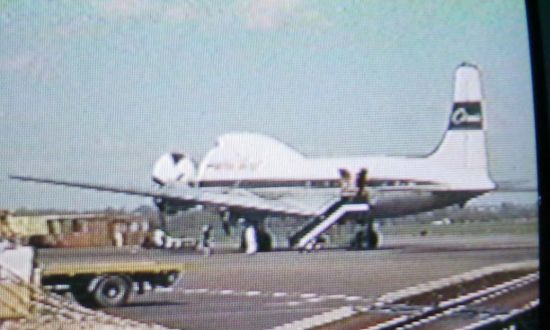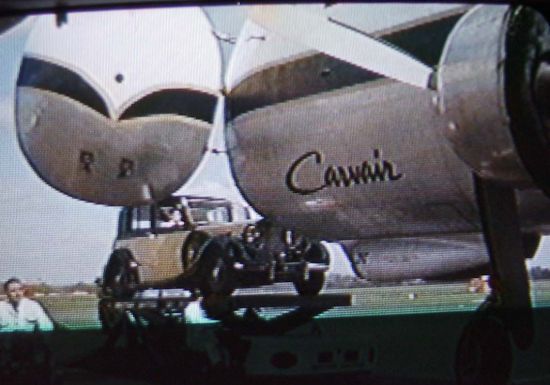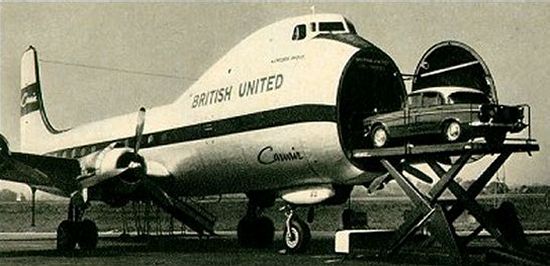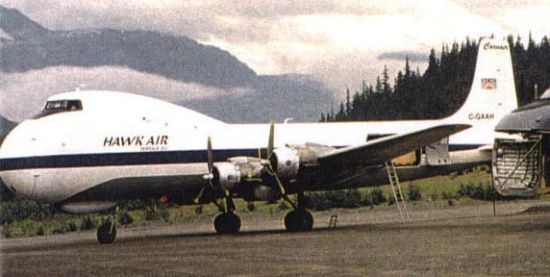|
||||||||||
|
|
||||||||||
|
||||||||||
|
|
||||||||||


Looking at the photos you have supplied, your confusion is understandable as the fuselage profile of this aircraft is indeed similar to that of the 747. However, the 747 would not make its first flight until 1969, and the plane in these photos is clearly powered by piston engines as indicated by the large propellers.
Nevertheless, the plane's true identity is easily given away by the second photo where the name "Carvair" reveals it to be the Aviation Traders ATL.98 Carvair, a 1960s British cargo transport, an example of which is shown below.

Shortly after World War II, the Bristol Aeroplane Company of Britain produced the Type 170 as a cross-channel ferry for three automobiles and up to 20 passengers. Needing to replace the aging car ferry led Aviation Traders to develop the larger ATL.98 Carvair (short for Car-via-air) with increased payload capacity and range. Instead of developing an entirely new design from scratch, Aviation Traders chose to modify an existing aircraft, the Douglas DC-4, which was relatively easy and inexpensive to buy as airlines removed them from their fleets. The DC-4 conversion process consisted of lengthening the fuselage, increasing the height of the vertical tail, moving the flight deck to a new cockpit bulge above the fuselage, and adding a sideways-hinging nose door for loading automobiles or cargo. The Carvair typically carried five cars in the forward hold and 22 passengers in the rear cabin, but up to 65 could be carried in all-passenger layout.

The first Carvair flew on 21 June 1961 and entered service in March 1962. About 21 were converted between 1961 and
1969 and operated initially by Aer Lingus, Aviaco, Ansett-ANA, British United Air Ferries, and Inter-Ocean
Airways. By 2002, only three Carvairs were believed to still be flying.
- answer by Jeff Scott, 13 January 2002
Read More Articles:


|
Aircraft | Design | Ask Us | Shop | Search |

|
|
| About Us | Contact Us | Copyright © 1997-2023 | |||
|
|
|||